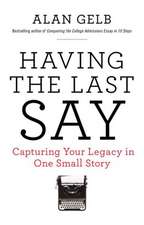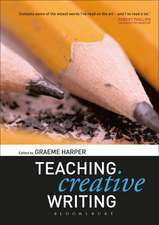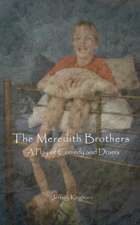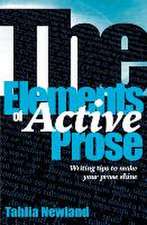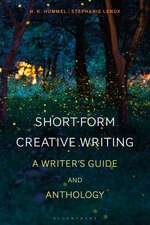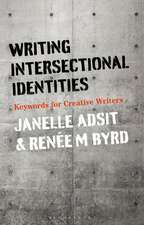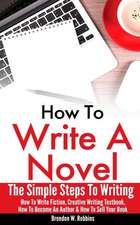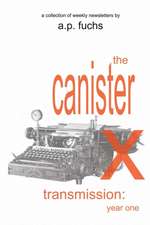The Science of Story: The Brain Behind Creative Nonfiction
Editat de Dr Sean Prentiss, Dr. Nicole Walkeren Limba Engleză Paperback – 8 ian 2020
| Toate formatele și edițiile | Preț | Express |
|---|---|---|
| Paperback (1) | 159.11 lei 3-5 săpt. | +27.10 lei 4-10 zile |
| Bloomsbury Publishing – 8 ian 2020 | 159.11 lei 3-5 săpt. | +27.10 lei 4-10 zile |
| Hardback (1) | 496.81 lei 6-8 săpt. | |
| Bloomsbury Publishing – 8 ian 2020 | 496.81 lei 6-8 săpt. |
Preț: 159.11 lei
Preț vechi: 173.10 lei
-8% Nou
Puncte Express: 239
Preț estimativ în valută:
30.45€ • 33.06$ • 25.58£
30.45€ • 33.06$ • 25.58£
Carte disponibilă
Livrare economică 01-15 aprilie
Livrare express 15-21 martie pentru 37.09 lei
Preluare comenzi: 021 569.72.76
Specificații
ISBN-13: 9781350084247
ISBN-10: 1350084247
Pagini: 256
Dimensiuni: 138 x 216 x 19 mm
Greutate: 0.32 kg
Editura: Bloomsbury Publishing
Colecția Bloomsbury Academic
Locul publicării:London, United Kingdom
ISBN-10: 1350084247
Pagini: 256
Dimensiuni: 138 x 216 x 19 mm
Greutate: 0.32 kg
Editura: Bloomsbury Publishing
Colecția Bloomsbury Academic
Locul publicării:London, United Kingdom
Caracteristici
A cutting edge exploration of the craft of creative nonfiction writing drawing on new developments in neuroscience
Notă biografică
Sean Prentiss is Associate Professor of English at Norwich University, USA. He is author of Finding Abbey: The Search for Edward Abbey and His Hidden Desert Grave (2015), which won the National Outdoor Book Award for Biography/History. He is also co-editor of The Far Edges of the Fourth Genre (2014) and co-author (with Joe Wilkins) of Environmental and Nature Writing: A Writer's Guide and Anthology (Bloomsbury, 2017). Nicole Walker is the author of the collections The After-Normal: Brief, Alphabetical Essays on a Changing Planet from Rose Metal Press and Sustainability: A Love Story from Mad Creek Books. Her previous books include Where the Tiny Things Are, Egg, Micrograms, Quench Your Thirst with Salt, and This Noisy Egg. She edited for Bloomsbury the essay collections Science of Story with Sean Prentiss and with Margot Singer, Bending Genre: Essays on Creative Nonfiction. She's nonfiction editor at Diagram and teaches at Northern Arizona University in Flagstaff.
Cuprins
Table of Contents01 Introduction, Sean Prentiss and Nicole Walker02 Bengal Tiger Moments: Perception of Time in the Brain and on the Page, Sean Prentiss, Vermont College of Fine Arts, USA03 Sipping from the Transmitter: Theorizing the 'Potential Essay', Lawrence Lenhart - 04 The Brain is a Master Class, Dave Madden, University of San Francisco, USA05 Brain on Fire, Nicole Walker, Northern Arizona University, USA06 The Brain Split in Half, Ira Surungruang, University of South Florida, USA07 When the Body Reads: Writing Sensory Perception for Reader Embodiment, Nancer Ballard, Brandeis University, USA08 Lens: A Lyric Meditation, Katherine Coles, University of Utah, USA09 The Heart and the Eye: How Description Can Access Emotion, JT Bushnell, Oregon State University, USA10 The Memory Agent, David Lazar, Columbia College Chicago, USA11 On Metaphor, V. Efua Prince, Wayne State University, USA12 The Glittering World of Synapses, Lyncia Bega, Dine´ writer and artist 13 A Sense of Oneness with Sun and Stone, Leila Phillips, College of the Holy Cross, USA14 A Gardener's Education (Animal Body), Marco Wilkinson, Oberlin College and Lorain County Community College, USA15 The Secret Lives of Stories: Rewriting Our Personal Narratives, Frank Bures, author of The Geography of Madness 16 Conversations in Intensive Care, Amy Wright, author17 Mindfulness and Memoir, Julie Wittes Shlack, author
Recenzii
This book offers intriguing takes on the question of how our unknowable brains reckon with experience and lead us to the artistic practice of creative nonfiction. Cognitive science, neuroaesthetics, mirror neurons, memory and metaphor all come out to play with these inquiring minds. This is not an instruction manual, but rather a series of brilliant provocations to expand the field of our writing lives.
The Science of Story makes a great case for the essay as premier scientific instrument. Each contribution in this anthology illuminates a new intersection between writing and science. How does time or space work in memory or on the page? How do description and emotion affect us? How do memory or metaphor work to produce the magic they do? How do the essays we love affect us emotionally? And more importantly, how can writers use or repurpose these tools to make more interesting and beautiful things? This book will be revelatory for writers of nonfiction and their many readers.
The Science of Story makes a great case for the essay as premier scientific instrument. Each contribution in this anthology illuminates a new intersection between writing and science. How does time or space work in memory or on the page? How do description and emotion affect us? How do memory or metaphor work to produce the magic they do? How do the essays we love affect us emotionally? And more importantly, how can writers use or repurpose these tools to make more interesting and beautiful things? This book will be revelatory for writers of nonfiction and their many readers.

